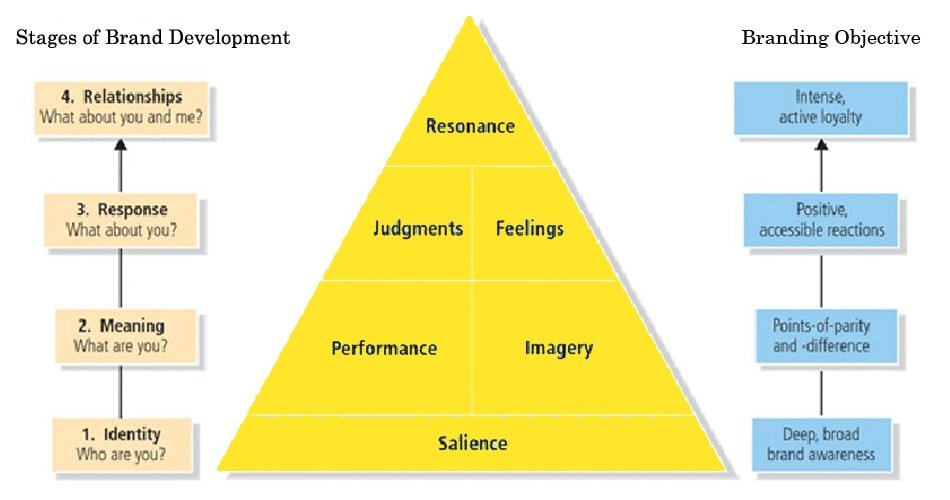Brand Equity

Brand equity is the invisible asset that can make or break a company.
Brand equity is more than a marketing buzzword; it’s the lifeblood of successful businesses. Imagine walking into a store and instantly recognizing a logo that sparks feelings of trust and familiarity. That’s brand equity at work. It reflects the value a brand adds to a product or service, influencing customer choices and loyalty. When consumers feel connected to a brand, they are more likely to choose it over competitors, even if the price is higher. This emotional connection can turn casual buyers into passionate advocates, making brand equity a powerful asset.
Brand equity is driven by various factors, including brand awareness, perceived quality, and customer loyalty. Companies invest time and resources to build a strong brand identity that resonates with their audience. In today’s competitive landscape, understanding and nurturing brand equity is crucial. It impacts sales and shapes a brand’s reputation and longevity in the market.
Building Brand Equity: The Brand Pyramid
To create brand equity, you must reach the top of your brand pyramid by establishing the right building blocks:
Brand Salience: How frequently and easily customers think about the brand in various situations.
Brand Performance: How well the product/service meets customers’ functional requirements.
Brand Imagery: The extrinsic characteristics of the product or service, including how the brand satisfies customers’ psychological and social needs.
Brand Judgments: Customers’ personal opinions and evaluations.
Brand Feelings: Customers’ emotional responses to the brand and its marketing program.
Brand Resonance: The relationship between the brand and customers, and how close they feel to the brand.
Sources of Brand Equity
Brand equity is influenced by several key sources that contribute to its overall value. These sources can be categorized into three main groups: customer-based, and company-based sources.
Customer-Based Sources
Brand Awareness
Brand awareness refers to the extent to which consumers are familiar with a brand and its products. It is the foundation of brand equity, as consumers must first be aware of a brand before they can develop any further associations or loyalty.
Coca-Cola is a prime example of a brand with high awareness. The brand’s iconic logo, extensive advertising campaigns, and global presence ensure that consumers worldwide recognize Coca-Cola instantly. This familiarity makes it easier for Coca-Cola to introduce new products and maintain its market position.
Brand Loyalty
Brand loyalty occurs when customers consistently choose one brand over others. These loyal customers are less likely to be swayed by competitors and are more likely to make repeat purchases and recommend the brand to others.
Apple enjoys strong brand loyalty, especially with its iPhone line. Customers who purchase an iPhone are often willing to continue buying newer models despite higher prices or the availability of alternative brands. Apple’s ecosystem, which integrates various products and services seamlessly, also encourages repeat purchases and loyalty.
Brand Associations
Brand associations are the mental connections that consumers make between a brand and its attributes, such as quality, reliability, or innovation. Positive associations can enhance brand equity by fostering customer loyalty and preference.
Volvo is strongly associated with safety. This association has been cultivated through decades of marketing and engineering focused on producing some of the safest vehicles on the road. As a result, consumers looking for a safe car often consider Volvo as a top choice.
Company-Based and Product-Based Sources
Company Reputation
A company’s reputation is built through consistent delivery of high-quality products, effective marketing, and positive customer experiences. A strong reputation can enhance brand equity by making consumers more likely to trust and choose the brand.
Johnson & Johnson has a strong reputation for producing safe and effective healthcare products. Despite facing occasional challenges, the company’s long-standing commitment to quality and its consumer-centric approach have helped maintain its positive reputation, thereby enhancing its brand equity.
Product Quality
Product quality encompasses the design, features, and overall performance of a product. High-quality products lead to satisfied customers, positive reviews, and repeat purchases, all of which contribute to stronger brand equity.
Toyota is known for its reliable and durable cars. The consistent quality of Toyota vehicles has earned the brand a reputation for reliability, leading to high customer satisfaction and loyalty. This, in turn, has significantly enhanced Toyota’s brand equity.
Brand Identity
Brand identity includes the visual and verbal elements that represent a brand, such as logos, colors, taglines, and overall design. A strong and consistent brand identity helps create a unique presence in the market and reinforces brand recognition and loyalty.
Nike’s “Swoosh” logo and the tagline “Just Do It” are instantly recognizable elements of the brand’s identity. This strong brand identity, combined with high-quality products and innovative marketing, has helped Nike build substantial brand equity over the years.
By understanding and leveraging these sources, companies can effectively build and sustain strong brand equity, ultimately driving business success and growth.
Conclusion
Brand equity is the cornerstone of a successful business, influencing customer choices and loyalty through emotional connections. By understanding and nurturing brand equity, companies can create lasting value, turning casual buyers into passionate advocates. Investing in brand awareness and a positive brand image is essential for long-term success in today’s competitive market.
Frequently Asked Questions (FAQs)
The worth of a brand is determined by its brand equity. It is the monetary equivalent of what a person or company is willing to pay for a brand.
Building brand equity takes time, and various things influence the brand equity of a corporation. Quality products or services, an easily recognizable name, and logo, and, most crucially, loyal customers are the three most critical factors in developing brand equity.
For businesses, brand equity can have real, measurable worth. Positive brand equity gives your business a significant competitive edge. Customers will not only prefer your brand over others, but they may also be willing to pay a higher price for it. It aids in the retention of personnel and the recruitment of qualified candidates from job markets.